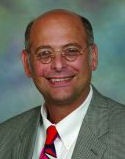A jolly old locums
A locums assignment in a northern region leads to an unusual patient.
My last locum tenens placement in Phoenix was an interesting experience—and a warm one. The midday temperatures that year exceeded all known records. On one Saturday off, I even tried the old trick of frying an egg on the sidewalk, but my breakfast was spoiled when the neighborhood mutt ate the experiment.
Clearly, suburban southwestern living was getting me hot under the collar. I contacted Loco Tenens, asked for the northernmost placement available, and was soon headed for higher latitudes.

It was good to be cold again, wading through refreshing eight-foot berms of near-glacial snow to get to work in the morning, not unlike my student days in Minnesota. Almost all of my patients were folks who worked for the area's largest manufacturing plant and distribution center, an international family-run business with yearly deliveries shipped to nearly every country on earth. Most were employed at the plant and carried diagnoses of Williams syndrome: Each had a stereotypical elfin face and an unusually chipper, outgoing attitude. I figured it must be something in the water (or snow).
I pondered undertaking an epidemiologic study, but my thoughts were soon interrupted by my next admission—a VIP patient, as it turned out. The nurse at admissions assured me, in hushed tones, that Mr. KK was a big deal at the local plant. I adjusted my tie, smoothed down my hair, girded my loins and, putting on my most professional demeanor, entered his room.
The patient was an overweight, elderly gentleman. He explained that he was going on a long business trip through multiple countries and needed a work-up before he left. Probably not a needed admission, but I was not going to argue the fact. After reviewing his vaccination records and past medical history—otherwise unremarkable save for longstanding obesity and facial erythema, previously diagnosed as rosacea—we moved on to the review of systems. When I asked about any recent, unexplained weight loss, he answered in the affirmative.
I looked him up and down a bit. Sure enough, his suit seemed loose in the belly, and I could tell he'd punched several new holes in his wide, black belt. I asked about his dietary habits. He was a fan of sugary snacks, cookies in particular, as well as “a few” hearty glasses of milk every night. Diabetes shot to the top of my differential, and I began quizzing him about his urine output. There was nothing remarkable there, as it turned out, but I ordered a fasting glucose, urinalysis and glycosylated hemoglobin just to be sure.
I asked him about occupational exposures. What kind of work did he do? He admitted to long trans-Arctic-Pacific-Indian-Atlantic flights where exposure to low pressures and temperatures was the norm. Was he at higher risk for DVT and PE on those long trips? Was there any high-altitude asthenia? What about hypothermia or frostbite? “No,” he chuckled, and said he was “great chums with Jack Frost,” whatever that meant.
I continued my line of questioning. What about industrial environments? Exposure to smoke or chemicals? After a moment's thought, he admitted that he often worked in tight, sooty spaces. My thoughts flashed to squamous cell carcinoma of the scrotum, otherwise known as chimney sweep's scrotum, one of the first diseases correlated to occupational exposure. I asked him to disrobe and examined the region—nothing unusual there, but his cheeks grew a little rosier after my inspection.
I started to get desperate. What about infectious diseases? Could this be a case of Mycobacterium avium, or cryptococcus? There's always plenty of guano in an old chimney. What about other zoonoses? Did he come into contact with livestock or wild animals? “Both,” he replied, and cheerfully went on to explain his hobby of caribou taming. After a grueling 20-minute lecture on the technical aspects of reindeer mating rituals, I latched onto the potential diagnosis of echinococcus, which is occasionally found cycling between wolves and wild caribou in the far north. Or what about that new species of Ehrlichia found in Minnesota and Wisconsin? I scented a case report. He also mentioned a reindeer with an auto-illuminated schnoz. This sounded congenital, though, not infectious.
I tried to focus on keeping my differential broad. What about drugs? Methamphetamines? Was this jolly old soul on ice? It could certainly explain the boundless energy he needed to make his round-the-world business trips. I relentlessly pursued this line of questioning on drug and alcohol abuse until he finally came to the tearful admission—yes, he'd occasionally slip a few shots of brandy in the eggnog. It soothed his anxiety.
Anxiety…I thought about it for a moment, and then I took a new tack. I screened him for depression, suicidal ideation, bouts of mania, delusions, hallucinations, family psychiatric history, on and on, until finally I hit on the possibility of obsessive-compulsive disorder. He had a habit, he said, of making extensive lists and “checking them twice.” I slumped in my chair. This wasn't going anywhere.
I resigned myself to waiting for the lab results of all the blood cultures, TSH levels and cancer markers and moved on with my history-taking. Did he have any previous surgeries or hospital stays? “Oh, just one,” he replied.
I squinted at him. “One? What was it?”
“Something French,” he puzzled aloud. “The missus wanted me to get it done. She said I was snoring too much and something needed to be done. It was Barry-something surgery...maybe something French.” I laughed with a startling “Ho, Ho, HO” and asked “Do you mean a ‘Roux-en-Y’?” That was it, he said. I gave him some dietary counseling, started a vitamin regimen and told him to order some new suits. And while I was at it, I asked for a train set.



